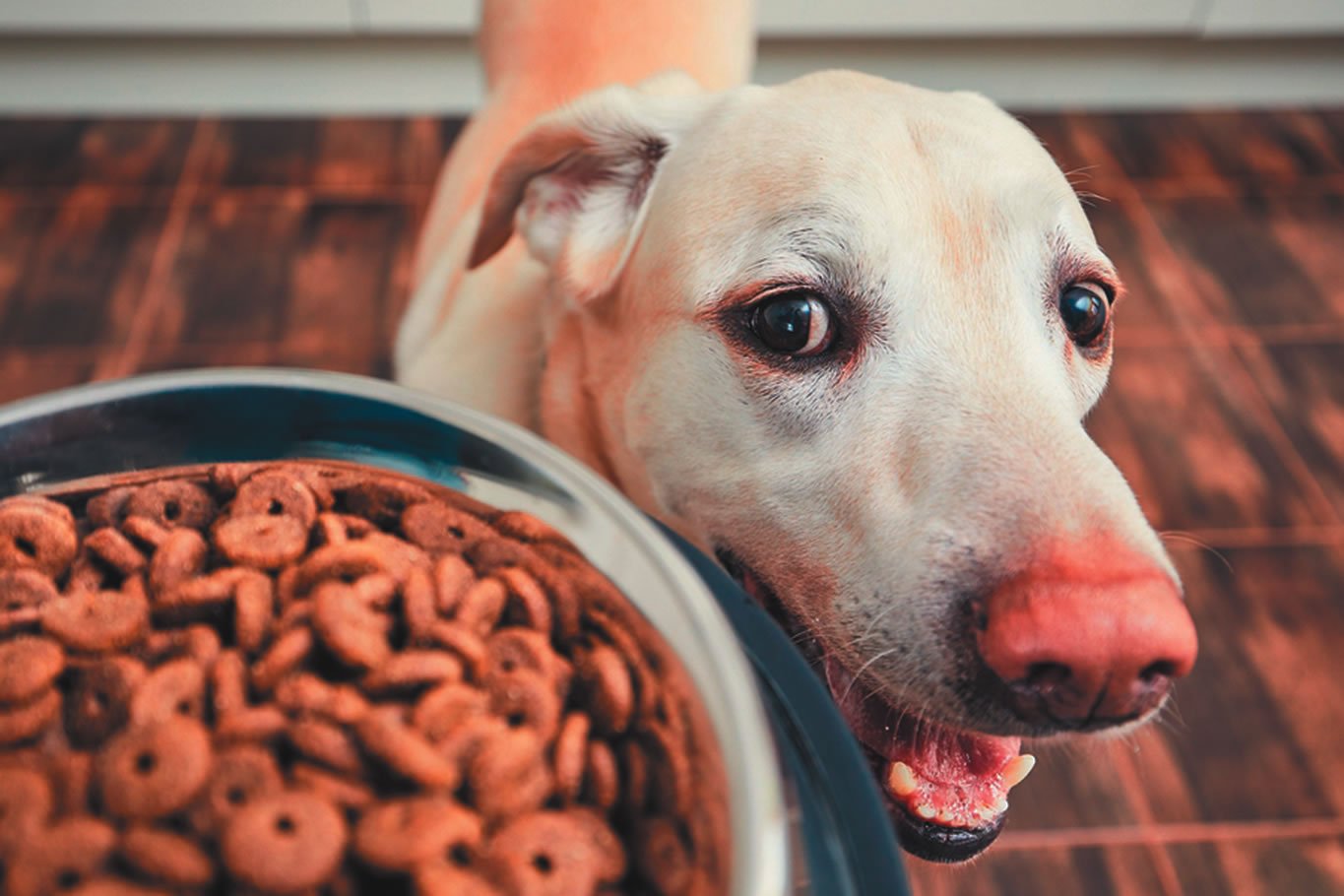
The reason efforts to slim down an overweight dog often fail is not because of a nutrition problem like too many calories per serving. Rather, most dogs have weight problems because of emotional issues — yours, not theirs.
In many households, food is the currency that buys love. A dog’s human family does not want to make a dog unhappy, fearing they will damage their close relationship with their canine friend if they withhold food. This is especially true when it comes to treats. “Providing treats is a central component of many pet owners’ relationships with their…dogs,” according to Deborah Linder, DVM, head of the Obesity Clinic at the Tufts Cummings School of Veterinary Medicine. Dr Linder writes in the journal Veterinary Clinics: Small Animal Practice, “Pet owners have actually expressed guilt or fear of depriving their pet of food as a rationale for not engaging in weight-loss plans.”
It becomes a particular problem when not one but two or three — or more — people in a household worry that depriving their pet of food means depriving her of love. That can add up to a lot of extra calories doled out from different people in the name of affection. And overfeeding can set your dog up for all of obesity’s attendant ills: diabetes, pancreatitis, hypothyroidism, arthritis and joint pain, and the list goes on.
Here’s how to make a diet stick — and watch your dog go from overweight to the sprightly animal you knew when she was younger.
1.Actually, measure your dog’s food with a gram scale, (All labels now list calories per kilogram as well as per cup.) It’s so easy to go over by trying to eyeball it. Research has shown that even the accuracy of veterinary staff in feeding a specific amount of food can be off by as much as 80 percent.
2. Better still, carefully measure all your dog’s food for a single day and all of her treats, and put them in one container with two compartments (one for the meals and one for the treats). Then scoop out appropriately into separate meals and snacks. That way, when the food’s gone, it’s gone. There’s no risk of family members overfeeding.
3. Make sure everyone in the household develops a relationship with the dog apart from feeding. One person can do the morning walk, one person a walk later in the day. Someone else still can be in charge of coming-home-from-work play time with toys and such. That way, attention takes the place of calories for showing your pet affection. Your dog will love the extra time spent with her human family members and will miss food less.
4. Bring more physical activity into the dog’s life. Research has shown that for people, 75 percent of weight loss is about calorie reduction and 25 percent is about burning more calories through physical activity. That’s not an insignificant proportion. For overweight dogs who haven’t been active, Dr. Linder typically recommends starting with two five-minute walks a day, working up to 20 minutes at a stretch.
5. Do not forego treats. Dogs, just like people, deserve snacks between meals, and just for fun. But dole out treats judiciously, checking calorie levels (by contacting the company if you have to) and being on board with everyone else in the home about how many treats the dog gets each day so there’s no surreptitious feeding. Treats should make up no more than 10 percent of a dog’s overall calories.





